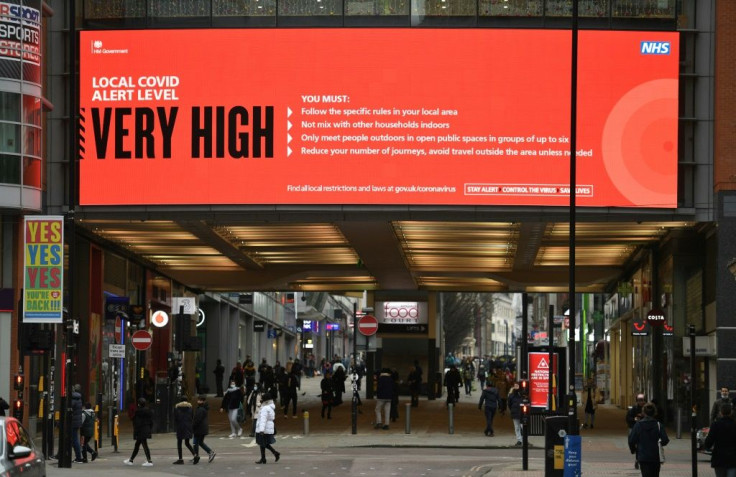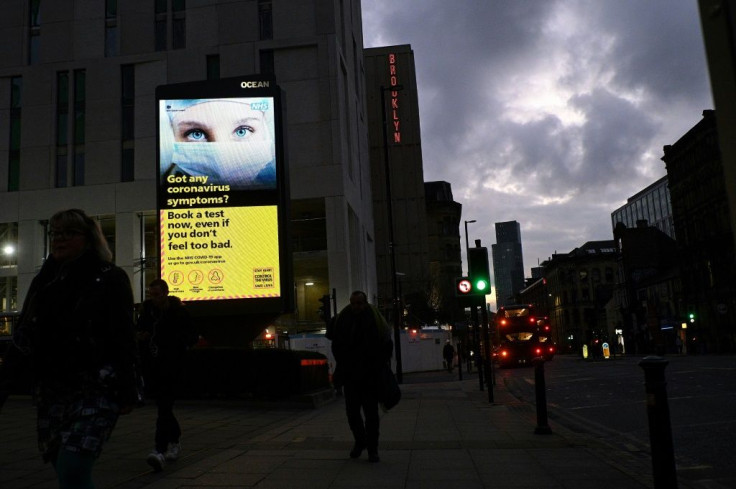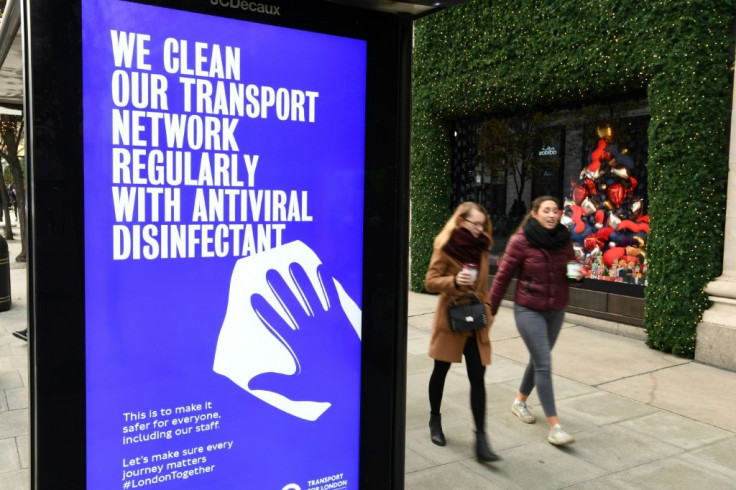Tens Of Millions Set For Strictest Curbs When England Lockdown Ends
More than 23 million people will be under the tightest restrictions once England's nationwide coronavirus lockdown ends next week, but London will escape the toughest rules, the government said on Thursday.
England will return to a regional tiered system when the national stay-at-home order ends on December 2, and 23.3 million residents in the worst-hit areas are set to enter the "very high" alert level.
They include the major cities of Birmingham, Bristol, Leeds, Manchester, Newcastle and Sheffield, with people there facing at least two weeks in the top tier.

The toughest restrictions -- which were in place before the shutdown, but only for 8.6 million people -- will compound difficulties for already struggling businesses, with hospitality and leisure facilities to remain closed.
However, more than half of the country including the capital will enter into tier two, which permits restaurants and many leisure facilities to reopen.
For the first time since March, limited public attendance at performances and sporting events will also be allowed.

People from different households may not mix indoors in either tiers.
Prime Minister Boris Johnson, who emerged from two weeks of Covid self-isolation on Thursday after coming into contact with an infected MP, warned of a "hard winter" ahead but urged compliance before vaccines come on stream.
"I really wish it were otherwise but if we're going to keep schools open as we must, then our options in bearing down on the disease are necessarily limited," he told a news conference, stressing they remained "less intrusive" than the current lockdown.

Health Secretary Matt Hancock said the alert levels would be reviewed after two weeks in mid-December.
The government announced earlier this week that restrictions would be eased for five days around Christmas.

Britain has been Europe's worst-hit country. It has recorded more than 57,000 deaths within 28 days of a positive virus test, after announcing another 498 fatalities Thursday, and nearly 1.6 million cases since March.
The government has been criticised for an initially slow response and of myriad failures introducing an effective testing and tracing regime in time to prevent a second wave.
However Hancock insisted the latest four-week lockdown that began November 5 had "successfully turned the curve" of infection rates, with cases down nearly a fifth and hospital admissions cut seven percent over the past week.
He attributed the fall to improvements in the expanding testing scheme.
Hancock also announced tier three areas will automatically be eligible to join a six-week mass testing programme of their local populations using so-called lateral flow tests.
Recently trialled in the northwestern city Liverpool, which has gone from tier three pre-lockdown to tier two next week, they deliver results within around an hour and will be delivered with the help of the army.
"The more people who get tested then the quicker that a local area can move down through the tiers, and get life closer to normal," the health minister said.
But the Conservative government faced a backlash over the return to the tiered approach, including from many of its own backbench lawmakers who must vote on the measures next week before they are introduced.
"The authoritarianism at work today is truly appalling," said Tory MP Steve Baker, deputy chairman of the backbench "Covid Recovery Group", which has been critical of the government's measures.
"Is it necessary and proportionate to the threat from this disease?"
Meanwhile leaders in some of the cities hit with the most severe restrictions hit out at a perceived lack of financial aid.
"Where I disagree with the government -- again -- is their decision to lock places down without proper support," said Manchester mayor Andy Burnham, who clashed with ministers on the issue ahead of the shutdown.
"How can tier three areas get no more business support than tier one?"
© Copyright AFP 2024. All rights reserved.





















